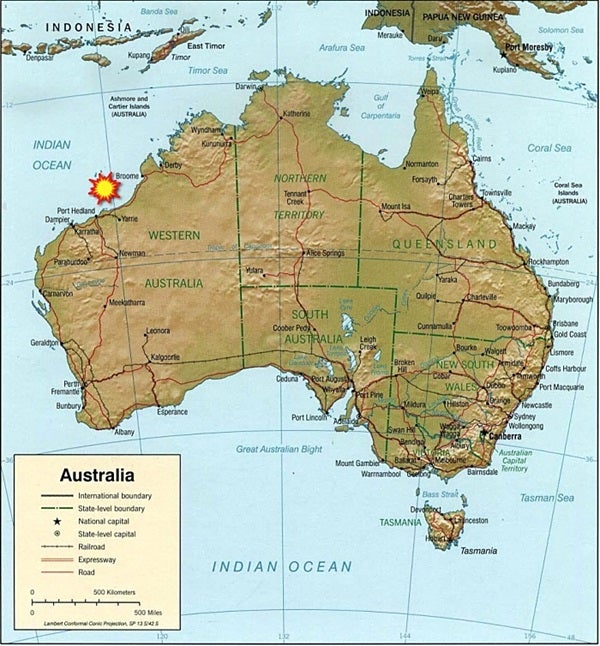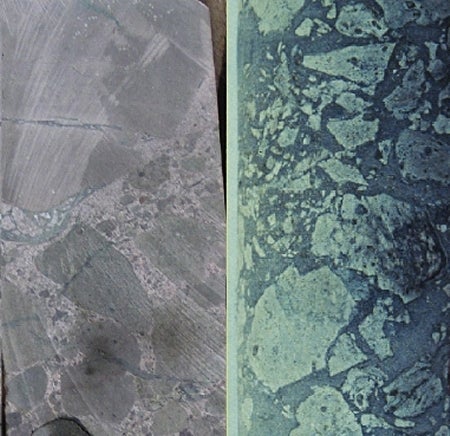The greatest extinction event in Earth’s history occurred 251 million years ago, punctuating the end of the Permian period with the loss of 90 percent of marine species and more than 70 percent of life on land. A team led by Luann Becker of the University of California, Santa Barbara reported in Science this week that a probable impact crater off the northwestern coast of what is now Australia formed in association with the event.
Most scientists now accept that the formation of Chicxulub, a buried impact crater on Mexico’s Yucatan Peninsula, accompanied the extinction of the dinosaurs 65 million years ago. Although widely speculated, evidence that a similar impact occurred at the end of the Permian period had been less compelling. Becker and her coworkers have previously reported specific isotopes of helium and argon trapped inside fullerenes — a cage-like formation of carbon atoms — which they believe came from space. During recent research in Antarctica, her team also found meteoritic fragments in a thin layer of Permian sediment.
The new evidence comes in part from two cores drilled through an undersea structure called the Bedout (pronounced “Bedoo”) High, which others had proposed as a possible Permian impact crater as early as 1995. The cores, drilled by oil companies in the 1970s and ’80s, dated from the end of the Permian but were identified as containing volcanic rock. After taking another look, Becker was convinced the rock was instead an impact melt. “We left convinced Bedout was our crater,” she said.
“This is very likely the impact site we’ve been looking for,” said study coauthor Robert Poreda of the University of Rochester, New York. “For years, we’ve been observing evidence that a meteor or comet hit the Southern Hemisphere 251 million years ago, and this structure matches everything we’ve been expecting.”
Like Chicxulub, Bedout also is associated in time with extreme volcanism — specifically, a massive lava outpouring known as the Siberian Traps. “We think that mass extinctions may be defined by catastrophes like impact and volcanism occurring synchronously in time,” Becker explained. “This is what happened 65 million years ago at Chicxulub but was largely dismissed by scientists as merely a coincidence. With the discovery of Bedout, I don’t think we can call such catastrophes occurring together a coincidence anymore.”
“There have been five mass extinctions throughout the Earth’s history,” Poreda noted. “Now, we have very strong evidence that massive meteor impacts happened precisely at two of those extinctions.”











